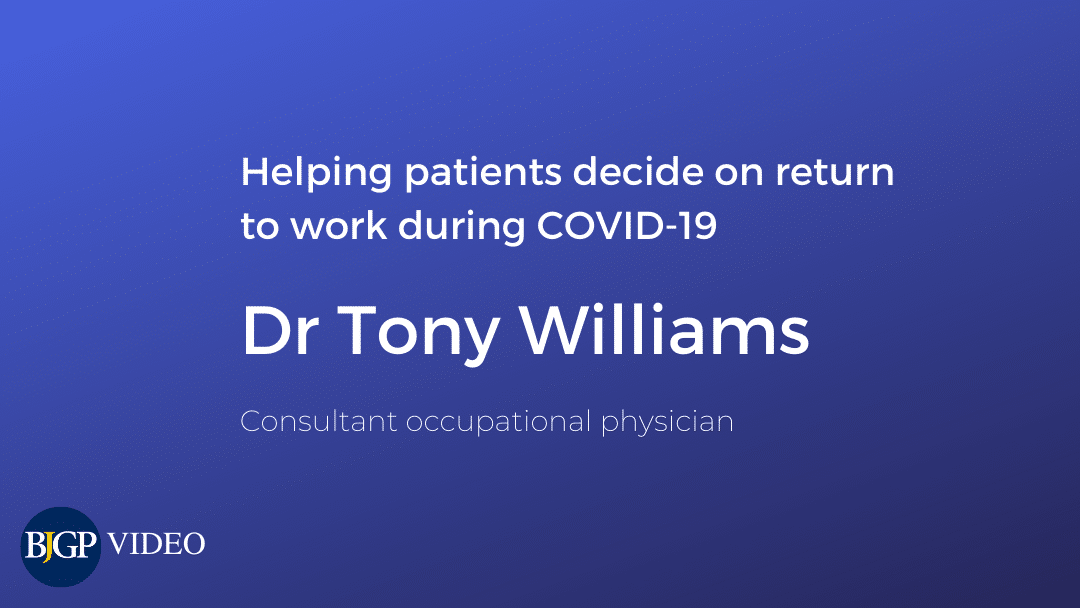
In frontline healthcare settings, the COVID-19 pandemic has conferred justifiable importance on the safe and accurate clinical assessment of acute respiratory syndrome. UK-wide lockdown has also enacted innumerable changes to public life; among these was the temporary suspension of garden waste collection in a third of local authorities in England,1 giving rise to a disconcertingly mouldy pile of grass cuttings in the corner of my garden. These circumstances led me to consider a rarer respiratory syndrome, hypersensitivity pneumonitis.
Hypersensitivity pneumonitis (HP), also known as extrinsic allergic alveolitis, is a form of interstitial lung disease caused by the repeated exposure and immune sensitisation to organic dusts and certain industrial agents.2 Sensitisation to the culprit antigen can occur over a period of weeks, months or years; subsequent re-exposure elicits inflammation of the small airways and lung parenchyma, with repeated and ongoing exposure leading to granuloma formation, emphysema, lung fibrosis and permanent loss of lung function.
Clinical diagnosis of HP is confounded by its rarity (with a UK annual incidence of ~1 in 100,000), non-specific presenting symptoms, and a differing natural history between individuals.2,3 Initial presentation can vary from an acute febrile respiratory syndrome (acute form) through relapsing-remitting cough and dyspnoea over weeks and months (subacute), or progressive worsening cough and shortness of breath over months and years (chronic).4 In the face of these challenges, it is clinically pressing to identify emerging HP, as the condition confers a three-fold increase in all-cause mortality to those with established disease.3
Garden waste collection is considered a low priority, but [the UK government] notes a “bioaerosol risk if collections are reduced beyond 2 weeks”.
As of June 2020, the UK government’s guidance for local authorities indicates that garden waste collection is considered a low priority, but notes a “bioaerosol risk if collections are reduced beyond 2 weeks”.6 A lack of evidence around safe limits of bioaerosol exposure makes this risk difficult to quantify in the context of FL; for example, it is unclear whether a two-month period of increased exposure to degraded domestic garden waste will produce excess cases of FL among the general UK population. As stated, it is broadly recognised that repeated exposure may elicit sensitisation in waste management workers now collecting and handling said waste, mitigated by their access to adequate PPE and safe work processes,5 but again one cannot establish the presence or degree of additional risk from the available evidence.
Realistically, individual GPs will encounter presentations of acute hypersensitivity pneumonitis very rarely, if at all, over the course our working lives. The following clinical features can aid in differentiating acute HP from an infective or obstructive lung pathology and determining the need for onward specialist referral:
- Rapid onset of symptoms within hours of exposure to a known offending agent:7
- Mouldy hay and vegetation (FL, mushroom grower’s lung)
- Aerosolised metal-working fluid (metal worker’s lung)
- Hot tub use (hot tub lung, caused by Mycobacterium avium)
- Avian proteins (bird-fancier’s lung)
- Cheese mould (cheese-worker’s lung)
- Mouldy malt (malt-worker’s lung)
- Recurring symptoms
- Bilateral inspiratory crepitations on auscultation
- History of weight loss
- Changes on chest radiograph including diffuse ground glass infiltrates and nodular/patchy opacities, often sparing the lung bases; note that 20% of chest radiographs are normal in acute HP.2,4,8
Hypersensitivity pneumonitis is rare but potentially life-altering and life-limiting; early recognition and avoidance of the trigger antigen play the most effective roles in preventing significant morbidity.
The circumstances of lockdown may increase the exposure of the public — and waste management workers in particular — to the antigens that trigger the farmer’s lung form of HP, but the question of whether this will result in a significant increase in incidence of FL requires further study.
References
1. Associated Press. Third of councils axe garden waste collections as Covid-19 hits staffing [Internet]. Aberdeen: Aberdeen Journals Ltd; 2020 April 1 [cited 2020 June 7]. Available from: https://www.eveningexpress.co.uk/news/uk/third-of-councils-axe-garden-waste-collections-as-covid-19-hits-staffing/
2. Lacasse Y, Cormier Y; Hypersensitivity pneumonitis. Orphanet J Rare Dis. 2006 Jul 31:25.
3. Solaymani-Dodaran M, West J, Smith C, Hubbard R. Extrinsic allergic alveolitis: incidence and mortality in the general population. QJM. 2007;100:233–237.
4. Richerson HB, Bernstein IL, Fink JN, Hunninghake GW, Novey HS, Reed CE, et al. Guidelines for the clinical evaluation of hypersensitivity pneumonitis. Report of the Subcommittee on Hypersensitivity Pneumonitis. J Allergy Clin Immunol. 1989;84:839–844.
5. Industrial Injuries Advisory Council. Extrinsic allergic alveolitis: isocyanates and other occupational causes [Internet]. London: Crown Copyright; 2016 [cited 2020 June 7]. Available from: https://assets.publishing.service.gov.uk/government/uploads/system/uploads/attachment_data/file/515554/extrinsic-allergic-alveolitis-isocyanates-and-other-occupational-causes-iiac-report.pdf
6. Department for Environment Food & Rural Affairs. Guidance on prioritising waste collection services during coronavirus (COVID-19) pandemic [Internet]. London: Crown Copyright; Updated 2020 June 3 [cited 2020 June 7]. Available from: https://www.gov.uk/government/publications/coronavirus-covid-19-advice-to-local-authorities-on-prioritising-waste-collections/guidance-on-prioritising-waste-collection-services-during-coronavirus-covid-19-pandemic
7. Lacasse Y, Selman M, Costabel U, Dalphin JC, Ando M, Morell F, Erkinjuntti-Pekkanen R, Muller N, Colby TV, Schuyler M, Cormier Y, HP Study Group Clinical diagnosis of hypersensitivity pneumonitis. Am J Respir Crit Care Med. 2003;168:952–958.
8. Monkare S, Ikonen M, Haahtela T. Radiologic findings in farmer’s lung. Prognosis and correlation to lung function. Chest. 1985;87:460–466.
Featured photo by Joshua Hoehne on Unsplash








